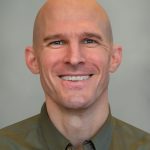14 Emerging Topics to Look for at Battelle’s 2022 International Conference on Remediation of Contaminated Sediments
January 5, 2022 – The 2022 Battelle Conference on the Remediation of Contaminated Sediments
Anchor QEA sediment experts are excited to attend and present at the Eleventh International Conference on the Remediation and Management of Contaminated Sediments on January 24-27, in Nashville, Tennessee. Bringing together thousands of professionals, government agencies, consultants, and environmental engineering firms from around the world, the biennial Sediments Conference will be a great forum for sharing industry innovations, research results, and practical remediation experiences. We’re looking forward to connecting with colleagues and friends from across the country while we’re there!

The Conference—organized and presented by Battelle—will touch a wide range of environmental, economic, political, and social issues.
Innovating Sustainable Solutions to Make an Impact at the Battelle Conference
Combining sustainable science and engineering solutions with management strategies, Anchor QEA’s team will present, chair sessions, and lead panel discussions on multiple topics covering a range of cost-effective solutions to complex problems. In addition, Betsy Henry is a session chair for “Monitoring and Evaluating Remedy Effectiveness” and is leading a panel titled “Implementing Adaptive Management at Contaminated Sediment Sites”. Clay Patmont is a session chair for “Remediation of Ports, Harbors, and Urban Waterways”. Following is a preview of what you can expect from our environmental engineers, scientists, and other experts during the four-day conference.
Related Insights
The Changing Landscape of PFAS, Part 1: Regulatory Change and Its Impact on Ports, Shipyards, and Utility and Industrial Sites
January 9, 2023 – Jennifer Benaman
Continue Reading »PFAS Primer: 5 Common Questions About the Changing Regulatory Landscape
December 19, 2022 – Anchor QEA
Continue Reading »

 Evaluating Site-Specific Background Including Ongoing Sources to Develop Realistic Cleanup Goals for the Newtown Creek Superfund Site
Evaluating Site-Specific Background Including Ongoing Sources to Develop Realistic Cleanup Goals for the Newtown Creek Superfund Site











